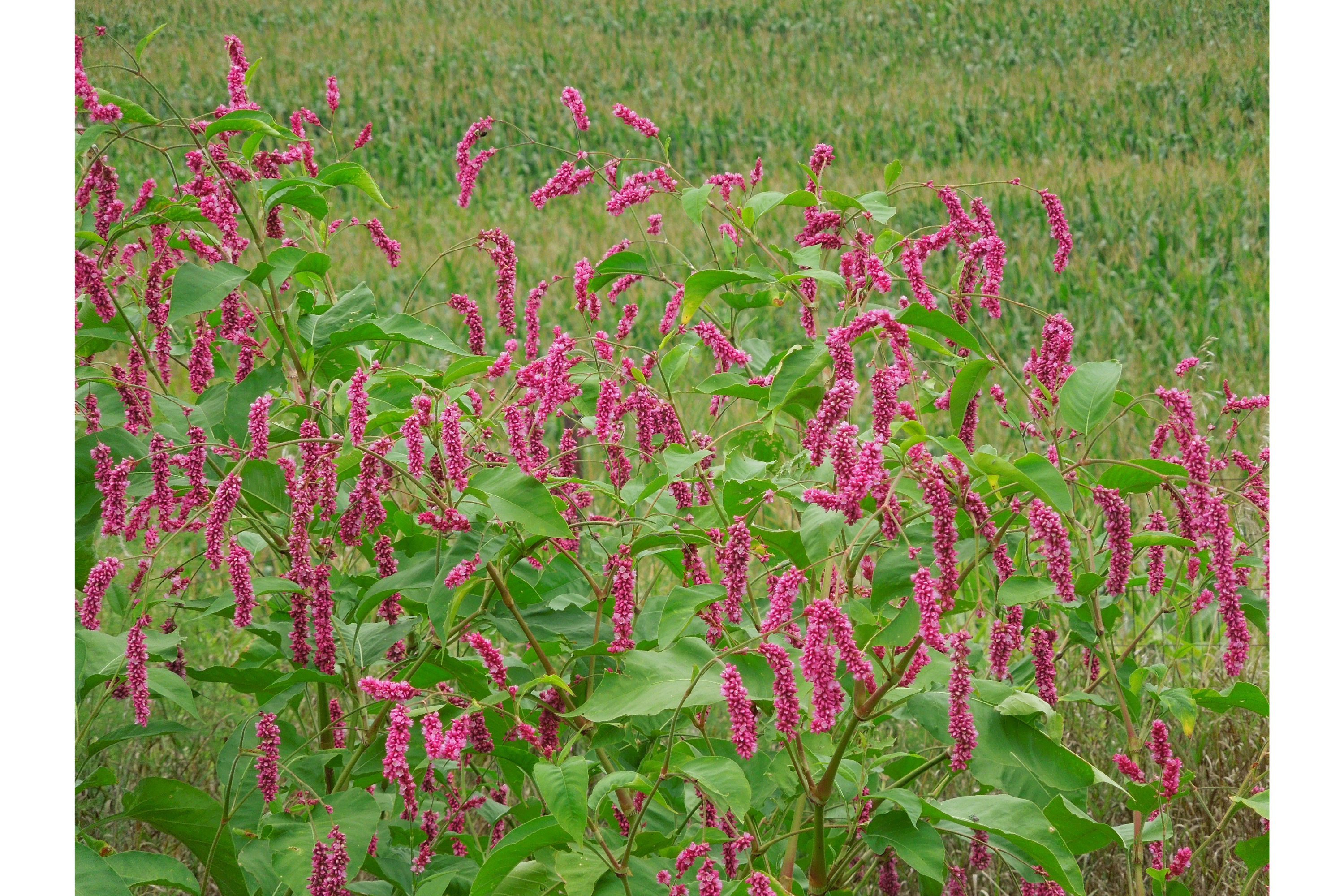Princess-feather
(Persicaria orientalis)

Description
Persicaria orientalis is a species of flowering plant in the family Polygonaceae, known as kiss-me-over-the-garden-gate and princess-feather. It was first described, as Polygonum orientale, by Carl Linnaeus in 1753. It was transferred to the genus Persicaria by Édouard Spach in 1841. Its native distribution is unclear. As of May 2019, Plants of the World Online lists only Uzbekistan,whereas other sources give a much wider distribution in temperate and tropical Asia and Australia. It is widely cultivated and naturalized. The genus includes annual and perennial herbs with taproots or fibrous root systems, or with rhizomes or stolons. The stems are often erect but may be prostrate along the ground, and some species are prickly. The stems are self-supporting or twining and climbing. The leaves are alternately arranged, deciduous, and variously shaped. The brownish or reddish ochrea may be leathery to papery. The inflorescence may be a panicle or a spikelike or headlike arrangement of fascicles of flowers. The flower is white, greenish, reddish, pink or purple, with the tepals partially fused together along the bases. The fruit is an achene which can take a number of shapes, including a disc or a sphere. Persicaria is a genus of herbaceous flowering plants in the knotweed family, Polygonaceae. Plants of the genus are known commonly as knotweeds or smartweeds. It has a cosmopolitan distribution, with species occurring nearly worldwide.The genus was segregated from Polygonum. Within the family Polygonaceae, Persicaria is placed in the subfamily Polygonoideae, where the tribe Persicarieae consists of two sister genera, Bistorta and Koenigia, together with Persicaria. The genus includes annual and perennial herbs with taproots or fibrous root systems, or with rhizomes or stolons. The stems are often erect but may be prostrate along the ground, and some species are prickly.The stems are self-supporting or twining and climbing. The leaves are alternately arranged, deciduous, and variously shaped. The brownish or reddish ochrea may be leathery to papery. The inflorescence may be a panicle or a spikelike or headlike arrangement of fascicles of flowers. The flower is white, greenish, reddish, pink or purple, with the tepals partially fused together along the bases. The fruit is an achene which can take a number of shapes, including a disc or a sphere.
Taxonomic tree:







